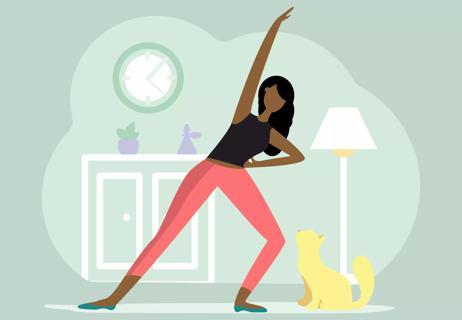It’s not uncommon for individuals with RA to also have the blood disorder

Rheumatoid arthritis (RA) affects more than 1.3 million people in the United States, while an estimated 3 million Americans are anemic.
Advertisement
Cleveland Clinic is a non-profit academic medical center. Advertising on our site helps support our mission. We do not endorse non-Cleveland Clinic products or services. Policy
But it’s not uncommon for those with RA to also have anemia.
So, what’s the connection between rheumatoid arthritis, an autoimmune disease that affects your joints, and anemia, a common blood condition?
Rheumatologist Matthew Bunyard, MD, discusses the relationship between rheumatoid arthritis and anemia.
Rheumatoid arthritis is an autoimmune disease that affects the joints on both sides of your body.
You may experience pain and inflammation in your fingers, hands, wrists, knees, ankles, feet and toes. RA can also, but more rarely, cause damage to your skin, eyes, lungs and heart.
“Rheumatoid arthritis is a symmetrical type of arthritis,” says Dr. Bunyard. “It traditionally affects the smaller joints of your hands and feet, though larger joints can be involved.”
Rheumatoid arthritis affects everyone in different ways. But some common symptoms include:
RA typically starts developing between the ages of 30 and 60. Some people may have joint symptoms develop over the course of a few years, while others may have symptoms that progress rapidly.
Advertisement
Medications can help reduce joint pain and swelling, as well as slow the progress of the disease. Also, certain lifestyle changes, like eating a well-balanced diet and exercising, can benefit most people with RA.
You have anemia when you don’t have enough red blood cells.
“The function of the red blood cells is to transport or carry oxygen out to the tissues of the body,” says Dr. Bunyard. “The red blood cells pick up oxygen through the lungs, and then their job is to carry the oxygen out to the other living tissues in your body.”
Several different types of anemia exist, but each one causes the number of red blood cells in circulation to drop.
If you’re anemic, you may feel more tired or cold than you usually do. Your skin might also seem pale.
Other symptoms include:
To treat anemia, it’s important to figure out what type you have. Treatments range from taking iron supplements to surgery. But again, it all depends on what type of anemia you have.
There are different kinds of anemia. But why do some individuals with rheumatoid arthritis also have anemia? Dr. Bunyard explains.
The most common type of anemia is iron-deficiency anemia. With this type, you have low levels of iron, which your body needs to make hemoglobin. Hemoglobin moves oxygen throughout your body.
If you experience blood loss, you can develop iron-deficiency anemia. In those with rheumatoid arthritis, this can happen if you take nonsteroidal anti-inflammatory drugs (NSAIDs). This type of medication is typically used to reduce pain and inflammation. But it can also cause gastrointestinal bleeding.
“NSAIDs have a systemic effect that can harm the lining of the stomach and bowel and make it more prone to bleeding,” says Dr. Bunyard. “In rheumatoid arthritis patients, it’s something doctors are vigilant about since medication can commonly cause that.”
Another type, anemia of chronic disease (also called anemia of inflammation) happens when you have an autoimmune disease or another illness that lasts longer than three months and causes inflammation.
It can affect those who have conditions that cause inflammation like infections, cancer, chronic kidney disease and autoimmune diseases like RA.
“While you may have normal or even high levels of iron, chronic inflammation can prevent your body from using that stored iron to make new red blood cells,” notes Dr. Bunyard.
Advertisement
This type of anemia happens when your body destroys healthy red blood cells. It occurs in those with immune disorders, an infection or because of certain medications.
“This type of anemia happens more rarely in individuals with rheumatoid arthritis,” says Dr. Bunyard.
If you have rheumatoid arthritis and anemia, your doctor will want to determine which kind of anemia you have.
A blood test will measure your hemoglobin and red blood cell levels. Your doctor may also test your blood to assess levels of other chemicals in it, like vitamin B-12, ferritin, serum iron and folic acid. All this information can help determine which amenia you have.
“It’s possible for someone to have both iron-deficiency anemia and anemia of chronic disease,” explains Dr. Bunyard.
Once the type of anemia has been determined, your doctor will move forward with treatment, if deemed necessary.
If the diagnosis is anemia of chronic disease due to rheumatoid arthritis, one option is using medication like disease-modifying antirheumatic drugs (DMARDs) to manage your RA symptoms, which can help with anemia.
If a person has iron-deficiency anemia, their doctor may recommend iron supplements.
Overall, if you have RA and have also been diagnosed with anemia, it’s important to talk to your doctor who can help determine the best course of action. By treating anemia, those with rheumatoid arthritis may have more energy.
Advertisement
“It comes back to the cause of the anemia,” reiterates Dr. Bunyard. “That’s really the key component because the treatments are going to vary depending on the reason.”
Advertisement
Learn more about our editorial process.
Advertisement

Say yes to whole foods, lots of fruits and vegetables, and anti-inflammatory antioxidants

Having well-controlled RA at the time of conception is the key to keeping it under control while you’re pregnant

Sleep, diet and exercise can help

Diet and exercise are your best first steps

The autoimmune disease can be managed with lifestyle changes and medication

Raspberries are packed with nutrients that can reduce inflammation and prevent chronic diseases

Adding foods like fruits, vegetables, fatty fish and whole grains to your diet may help soothe inflammation

Building a support system, adapting activities you love and following a healthy diet can all help manage symptoms and changes

Start having sex about 72 hours before ovulation, then at least every other day during your fertile window

Attachment theory suggests that your earliest relationships shape connections throughout your life

It isn’t a recognized mental health disorder, but research shows that problematic social media use can negatively affect your mental health, self-esteem and sleep